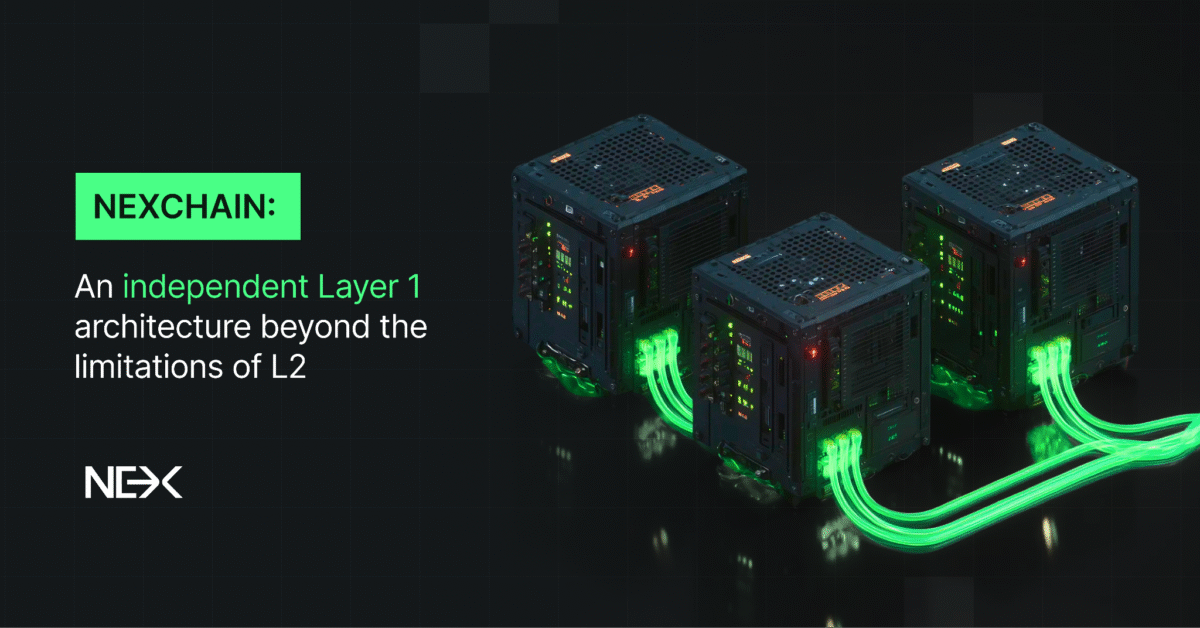Nexchain, an AI-powered Layer 1 blockchain, is gaining traction as it advances through Stage 25 of its ongoing presale. With high-speed transactions, low fees, and enterprise-grade scalability, the project is emerging as one of the top crypto presales of 2025. Early buyers are positioning themselves ahead of an expected price increase in future stages.
AI-Powered Blockchain for Speed and Cost Efficiency
Nexchain is designed to process up to 400,000 transactions per second while keeping fees at about $0.001. Moreover, the platform’s built-in artificial intelligence optimizes the deployment of smart contracts and reduces errors. This aims to deliver fast, reliable, and affordable blockchain transactions for both businesses and individual users.
The platform’s operational testnet is live, which allows users to test the network features and performance. Additionally, the Nexchain explorer allows transparent and real-time tracking of blocks, transactions, and validators. A security audit has been done by Certik and SolidProof, and the report is available for public review once complete.
Nexchain will release a developer toolkit before the mainnet beta launch in Q4 2025. This enables developers to build decentralized applications and create advanced smart contracts. Furthermore, the Smart Contracts 2.0 feature will introduce self-optimization and decision-making capabilities to expand their applications across different use cases.
Presale Progress and Token Utility
Nexchain’s token presale is in Stage 25, with $8,570,867 raised toward its $9,275,000 target. Tokens are priced at $0.10 in the current stage, and the final listing price is expected to be $0.30, offering early participants the chance for a potential 300% return. Buyers can use ETH, USDT, or BNB via non-custodial wallets like MetaMask or WalletConnect.
The presale structure includes vesting schedules and anti-whale measures to maintain a fair distribution. Token holders will earn staking rewards from a share of transaction fees, adding long-term earning potential. Tokenomics set aside 20% of the supply for public sales, 17% for the treasury, and 15% for the ecosystem.
Additionally, Nexchain will burn tokens over time to manage supply. Holders will also have governance rights, allowing them to participate in platform decision-making, making it a community-driven Web3 crypto presale.
Hybrid Consensus, Interoperability, and Market Position
The platform uses a hybrid Proof-of-Stake and AI-driven consensus model to balance speed with security. It also supports cross-chain bridges for smooth interaction with other blockchain networks. Developers have access to the SDK and API, allowing AI integration into decentralized applications.
Investor interest continues to grow because of Nexchain’s potential to solve issues like scalability, interoperability, and high costs. The recently released whitepaper outlines the project’s architecture, tokenomics, and a clear roadmap for presale investors.
The project’s focus on real-time optimization, cross-chain compatibility, and enterprise-level adoption positions it as a breakout presale token in the bull market.
Conclusion
With over $8.5 million raised so far and an AI-driven architecture built for scale, Nexchain is one of the best crypto presales to watch in 2025. At $0.10 per token, Stage 25 offers early participants a chance to secure a stake before future price increases. For those seeking a new token presale that combines speed, low fees, and enterprise-ready solutions, Nexchain presents a realistic path to turning a $250 investment into a valuable position in the next bull run.
Disclaimer: This media platform provides the content of this article on an "as-is" basis, without any warranties or representations of any kind, express or implied. We assume no responsibility for any inaccuracies, errors, or omissions. We do not assume any responsibility or liability for the accuracy, content, images, videos, licenses, completeness, legality, or reliability of the information presented herein. Any concerns, complaints, or copyright issues related to this article should be directed to the content provider mentioned above.







